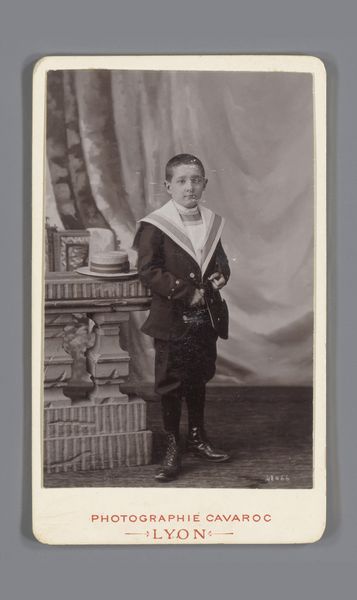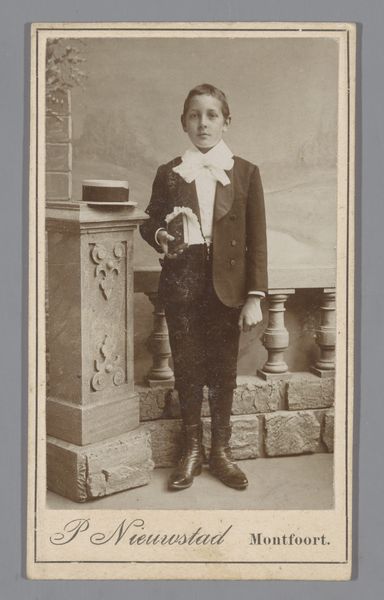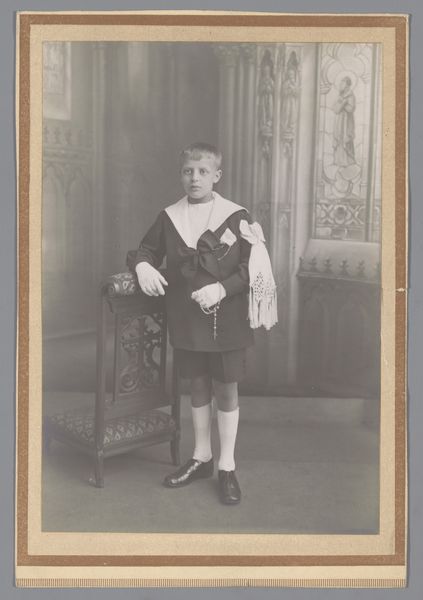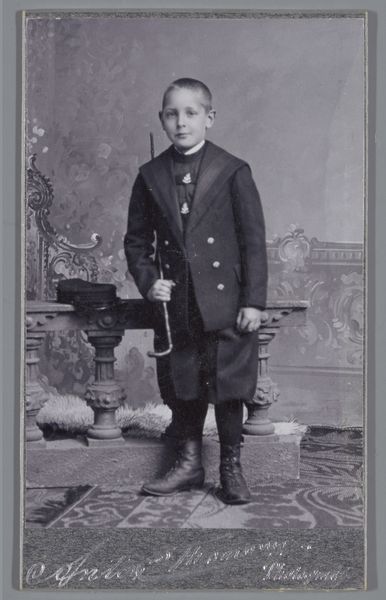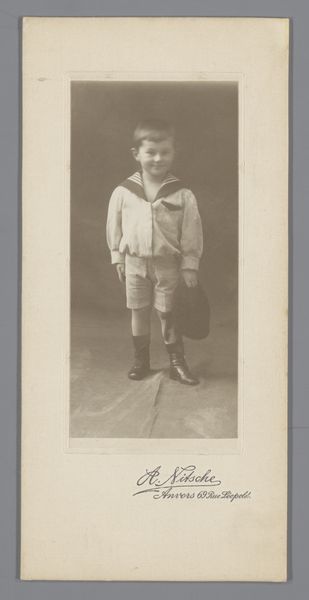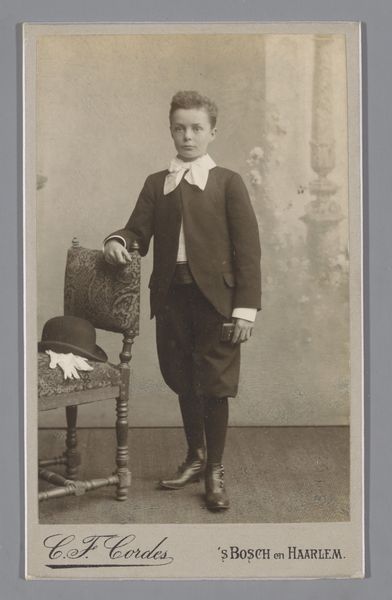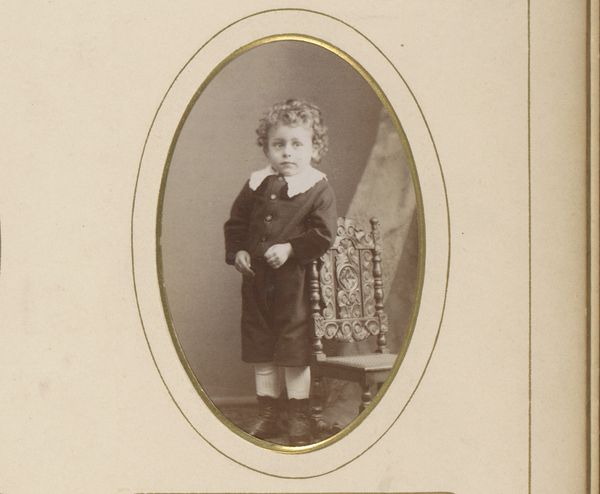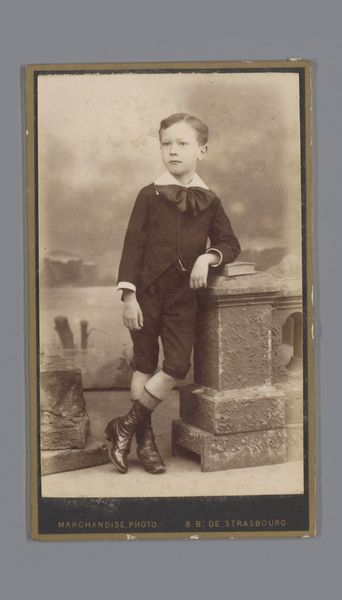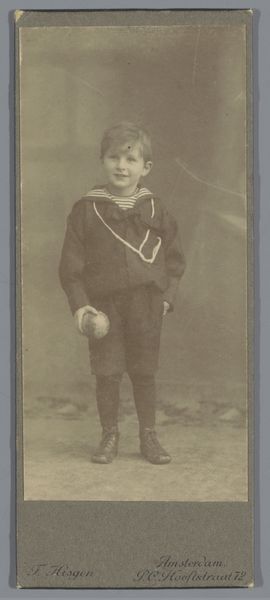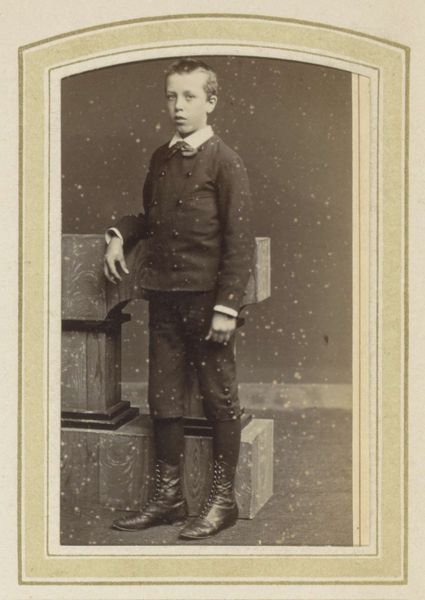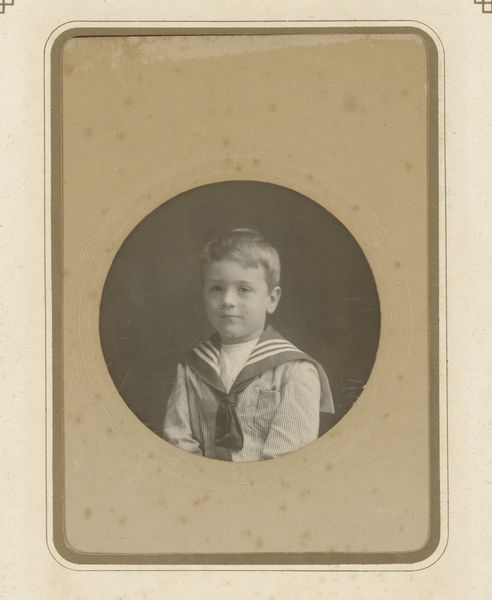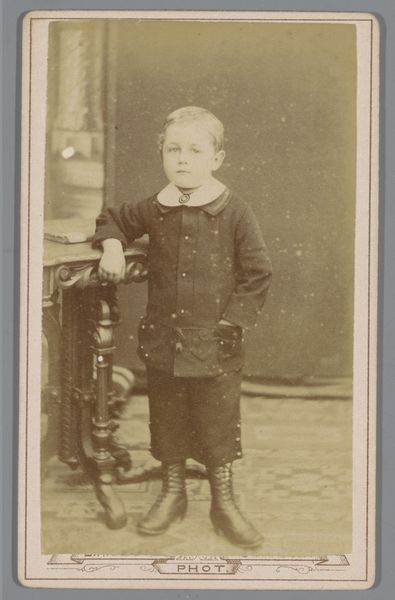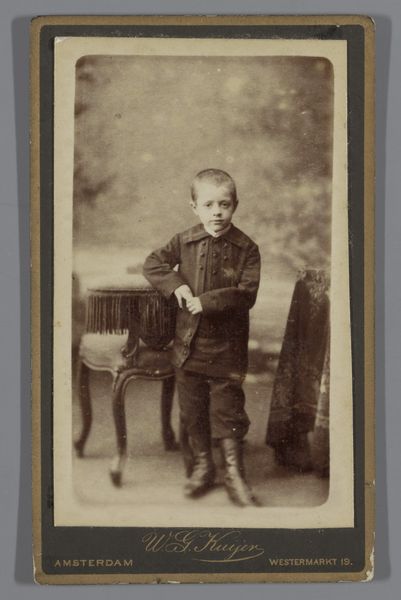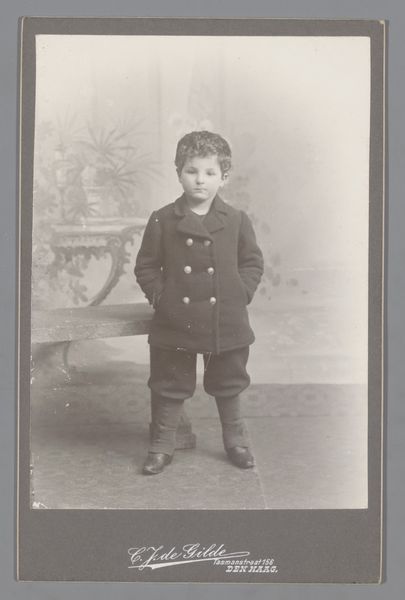
photography, gelatin-silver-print
#
portrait
#
photography
#
gelatin-silver-print
#
genre-painting
Dimensions: height 105 mm, width 55 mm
Copyright: Rijks Museum: Open Domain
Editor: This gelatin-silver print, "Portret van een onbekende jongen in communiekleding," by G. Salvane, circa 1900-1915, has a solemn formality to it. It’s intriguing – almost unsettling. What strikes you most about this image? Curator: It immediately makes me consider how rites of passage, like first communion, functioned to reinforce social structures. The photograph, while seemingly a simple portrait, participates in constructing identity – both religious and social. How does the boy's carefully constructed presentation intersect with the social expectations placed upon him? Editor: I hadn’t considered that. It’s almost like the photo itself is a ritual, reinforcing that expectation. The serious expression on his face contrasts with his age. Does that resonate with the political landscape of the early 20th century at all? Curator: Absolutely. The early 20th century was a period of immense social upheaval and changing notions of childhood. This image, with its emphasis on decorum and religious duty, can be read as a counter-narrative to emerging progressive ideas about youth and individual agency. How complicit is the act of photographing in shaping social roles? Editor: I see your point. It’s like the camera becomes another tool of societal pressure, forcing him into this pre-determined role. The studio setting also suggests an economic dimension; not everyone could afford a formal portrait. Curator: Precisely! This image speaks volumes about class, religion, and the performance of identity. We can see how seemingly personal portraits are actually deeply intertwined with broader cultural forces. What did you initially interpret it as being? Editor: At first, I simply thought of it as a historical record, but I now appreciate it on a deeper, more critical level. Thank you. Curator: And I thank you; your insights gave me a renewed way to look at historical records.
Comments
No comments
Be the first to comment and join the conversation on the ultimate creative platform.
